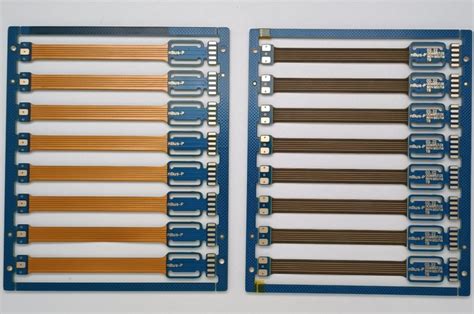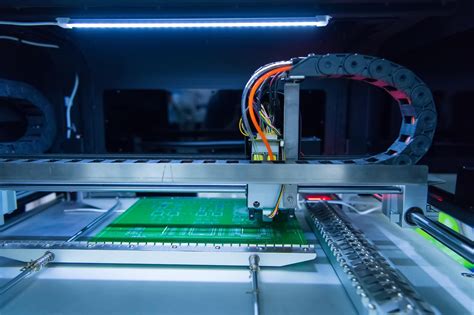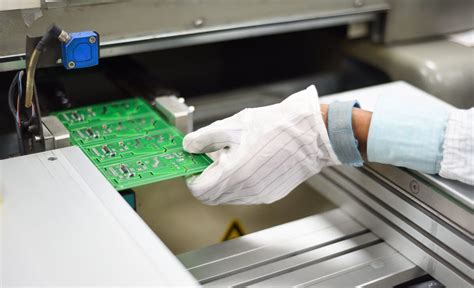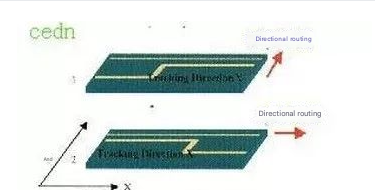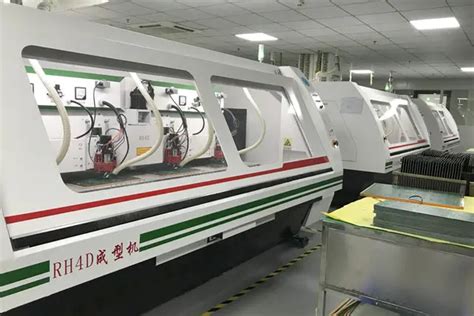Innovative Approaches to Flex PCB Prototyping Techniques

Key Takeaways
In the realm of flex PCB prototyping, understanding the essential components that distinguish successful designs can greatly influence your approach. The integration of innovative materials and advanced technologies is pivotal, as these elements not only enhance the functionality of your flex PCBs but also dramatically reduce production times. As you navigate the landscape of pcb manufacturing, consider collaborating with reputable pcb manufacturing companies that stay at the forefront of these advancements. This partnership can lead to significant cost savings, optimizing your pcb manufacturing cost, and ensuring that your pcb manufacturing business remains competitive. Additionally, adopting strategic design methodologies enables you to tailor prototypes more effectively, which can result in improved performance metrics and adaptability in various applications. Therefore, by emphasizing these trends and collaborating with expert manufacturers, you can elevate your projects to new heights in the dynamic field of flexible electronics.

Introduction to Flex PCB Prototyping: The Future of Flexible Electronics
The evolution of flexible printed circuit boards (PCBs) represents a groundbreaking shift in the realm of electronics, enabling the design and production of devices that are not only lightweight but also highly adaptable. As you delve into the world of flex PCB prototyping, it’s crucial to understand that this innovative approach offers unique advantages over traditional PCB manufacturing methods. With increasing demand for miniaturized and flexible devices, both pcb manufacturing companies and engineers are tasked with adopting cutting-edge technologies that facilitate rapid prototyping while also minimizing the overall pcb manufacturing cost. This transformation is driven by advancements in materials, such as flexible substrates and high-performance conductive inks, which allow for better performance in challenging environments. To further optimize your designs, consider employing design strategies that leverage these unique characteristics of flexible PCBs.
“Embracing innovative prototyping techniques can significantly shorten development cycles while enhancing product quality.”
This approach not only streamlines your workflow but can also position your pcb manufacturing business at the forefront of this dynamic industry. As you explore flex PCB prototyping, it becomes evident that investing in these new technologies will yield benefits far beyond initial cost considerations—that is, providing enhanced functionality and responsiveness to market demands.
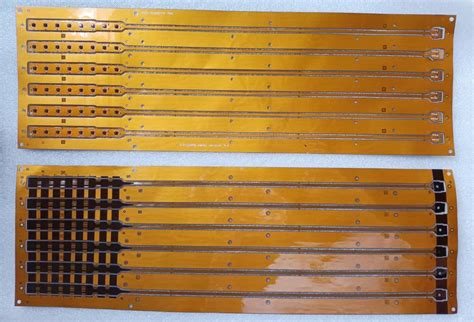
Key Technologies Revolutionizing Flex PCB Prototyping
In the realm of flex PCB prototyping, several key technologies are setting new standards and transforming the industry. Advances in flexible materials have made it possible to create lighter and more resilient circuits that can easily conform to various shapes and surfaces. The integration of printed electronics is also on the rise, allowing for more efficient production methods that can significantly reduce pcb manufacturing costs. These methods enable engineers like you to create intricate designs with a high degree of precision while minimizing waste.
Moreover, smart manufacturing technologies, including automation and advanced robotics, are enhancing production efficiency. Such improvements allow pcb manufacturing companies to streamline their operations, thereby improving turnaround times for prototypes. In this context, you should also consider the role of software tools that facilitate better design simulation and testing, which ultimately leads to improved yield rates.
Another pivotal development lies in the digital transformation surrounding design processes. By leveraging data-driven insights and responsive production techniques, businesses can maintain flexibility in their operations while also achieving scalability. This adaptability is essential in today’s fast-paced market environment where minimization of both pcb manufacturing business risks and lead times is crucial for success.
Ultimately, embracing these cutting-edge technologies within your prototyping processes will not only enhance performance but also position your projects at the forefront of innovation in flexible electronics. To learn more about effective strategies in flex PCB prototyping, visit Andwin PCB.
Innovative Materials for Enhanced Flex PCB Performance
In the realm of flex PCB prototyping, the materials you choose play a pivotal role in determining the overall functionality and durability of your designs. Recent advances in polymeric substrates and conductive inks have revolutionized this aspect, enabling pcb manufacturing companies to offer products with superior electrical performance and resilience. Using materials such as polyimide, PET, and newly developed composites can significantly improve performance metrics, including thermal stability and bending resistance. Furthermore, these innovations often result in lower pcb manufacturing costs, providing you with an economic advantage while enhancing product reliability. By assessing the properties of various materials, you can select options that not only meet performance expectations but also align with your project’s budget constraints. This strategic choice in material selection not only streamlines your pcb manufacturing business but also positions it to meet the increasing demands of sophisticated electronic applications, ensuring your flex PCBs can withstand more challenging environments while maintaining intrinsic electrical characteristics.
Design Strategies to Optimize Flex PCB Functionality
Optimizing flex PCB functionality is pivotal in ensuring that your designs meet the demands of modern electronics. You may start by focusing on layer stacking—creating a balanced arrangement of conductive and dielectric layers is crucial for performance and flexibility. By strategically placing high-frequency components and minimizing interference, you can enhance signal integrity. Furthermore, consider employing microvias to connect multiple layers efficiently, which aids in conserving space without sacrificing reliability.
Table 1 below presents an overview of key design considerations:
| Design Consideration | Description |
|---|---|
| Layer Stacking | Balances conductive and dielectric layers for optimal performance |
| Microvias | Allows efficient multi-layer connections |
| Component Placement | Strategic positioning to avoid interference |
| Material Selection | Choosing appropriate materials for flexibility and durability |
In addition, the choice of materials is essential. Utilizing advanced flexible substrates such as polyimide can significantly improve thermal resistance and mechanical strength, thus addressing common challenges encountered in the PCB manufacturing process. Ultimately, these strategies not only enhance your product’s functionality but also contribute to more competitive pricing by reducing the overall PCB manufacturing cost associated with production inefficiency. You will find that by focusing on these design strategies, you can collaborate effectively with PCB manufacturing companies, resulting in higher-quality prototypes that are ready to scale successfully within your PCB manufacturing business.
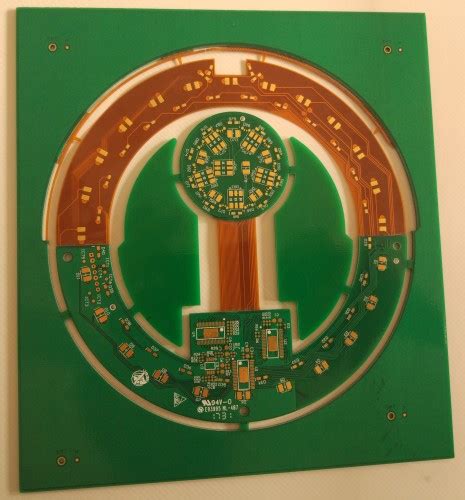
Streamlining Production Processes in Flex PCB Fabrication
In the ever-evolving world of flexible electronics, companies are continually seeking ways to streamline production processes in flex PCB fabrication. One of the key aspects of achieving this goal involves optimizing workflows related to pcb manufacturing. By leveraging advanced technologies, such as automated pick-and-place systems and more efficient etching processes, you can significantly reduce the time and costs associated with producing flexible PCBs. Furthermore, collaborating with reputable pcb manufacturing companies that specialize in flexible solutions can greatly enhance efficiency. These firms often have established best practices that minimize pcb manufacturing costs while maximizing output quality.
When considering a pcb manufacturing business, it’s crucial to evaluate their capabilities and technologies to ensure they align with your project’s specific needs. Embracing innovative materials—such as polyimide films—and design methodologies can also play a pivotal role in streamlining production. Adopting these strategies not only improves the overall performance of your flex PCBs but also contributes to faster turnaround times, which is essential in today’s competitive landscape. By understanding and implementing these specialized approaches, you can achieve remarkable results in your flex PCB projects while staying ahead of industry trends.
Case Studies: Successful Implementations of Flex PCBs in Various Industries
In recent years, flexible printed circuit boards (Flex PCBs) have gained significant traction across a variety of industries, showcasing their adaptability and advantages over traditional rigid circuits. For instance, in the medical sector, companies have integrated Flex PCB technology into wearable health monitoring devices, allowing for more streamlined designs that can conform to the body. This not only enhances patient comfort but also improves device functionality. Furthermore, advancements in pcb manufacturing processes have enabled manufacturers to reduce the pcb manufacturing cost, making it more feasible for healthcare businesses to adopt these innovations.
In the consumer electronics arena, major companies have utilized Flex PCBs in the design of compact smartphones and wearable technology. The use of innovative materials in these prototypes has allowed for ultra-thin products without sacrificing performance. As you assess potential partners in this evolving landscape, consider collaborating with reputable pcb manufacturing companies that are well-versed in cutting-edge techniques. By choosing wisely, you can leverage their expertise to minimize production times while ensuring high-quality prototypes that meet your design needs.
Moreover, the automotive industry has seen notable applications of flexible circuits within dashboard displays and sensor modules. These implementations not only contribute to a cleaner aesthetic but also provide reliable connections in environments subject to vibration and temperature fluctuations. The success stories emerging from these case studies demonstrate how Flex PCBs are not merely a trend; they represent a fundamental shift towards more versatile electronics.
When considering your own projects or products, it’s essential to analyze how adopting Flex PCB technology could revolutionize your designs and production processes as companies continue to report significant advantages from their investments in innovative pcb manufacturing business practices. With ongoing advancements and increasing demand for flexible electronics across multiple sectors, the future looks bright for Flex PCB applications globally.
Challenges and Solutions in Flex PCB Prototyping
In your journey through flex PCB prototyping, you may encounter several challenges that can impede your projects. One significant issue is the varying pcb manufacturing standards across different pcb manufacturing companies. This inconsistency can affect the quality and precision of your prototypes, making it essential to choose a reputable manufacturer that understands the complexities of flexible designs. To navigate this, consider establishing a robust set of guidelines for quality assurance and regularly collaborating with your production partner to address discrepancies.
Another challenge arises with the pcb manufacturing cost, particularly when utilizing new materials or technologies. This can often lead to budget constraints, especially for startups or smaller businesses trying to break into the market. A potential solution here is focusing on iterative testing. Instead of committing to large production runs initially, you can refine your prototypes through smaller-scale iterations, which helps in both reducing costs and enhancing functionality before scaling up.
Moreover, designing for flexibility requires you to overcome traditional design constraints typically associated with rigid PCBs. This necessitates innovative design strategies that are adaptable and optimize for the unique properties of flexible circuits. By embracing software tools that simulate stress and strain on your designs during the development phase, you can preemptively address potential failures in your prototypes.
As you integrate these solutions into your workflow, keeping abreast of current trends in flex PCB technology will also aid in identifying future advancements and improvements. With an eye on constantly evolving methodologies within the pcb manufacturing business, you’ll be better positioned to exploit opportunities that boost efficiency and functionality in your projects. By facing these challenges head-on and implementing strategic solutions, you can not only enhance your flex PCB prototyping process but also contribute positively to advancements within the industry.

Future Trends in Flexible Electronics and Their Impact on Prototyping Techniques
As you look toward the future trends in flexible electronics, it is essential to recognize how these trends will shape prototyping techniques. The increasing demand for miniaturization and multifunctionality in devices is driving innovations in flex PCB prototyping. With advancements in materials and manufacturing processes, your ability to create more efficient and flexible designs is enhanced significantly. The integration of new technologies will not only optimize the pcb manufacturing cost but also streamline operations within pcb manufacturing companies. This shift could lead to a decrease in lead times for prototyping, enabling faster iterations and testing cycles. Moreover, emerging materials such as conductive inks or advanced substrates play a crucial role, enhancing durability while maintaining the lightweight nature of flex PCBs. Therefore, it’s vital for you to stay informed about these developments, as they will have considerable implications for your pcb manufacturing business strategies. Embracing these trends ensures that you remain competitive while meeting the evolving needs of your clientele who increasingly seek versatile and reliable electronic solutions.
Conclusion
In summary, the exploration of flex PCB prototyping has illuminated numerous opportunities for advancement in the field of flexible electronics. Your journey through innovative methods and technologies reveals how pcb manufacturing is evolving in response to increased demand for lightweight, adaptable circuitry. The integration of advanced materials not only enhances performance but also reduces overall pcb manufacturing costs, making it more accessible for various applications across industries. You may find that partnering with forward-thinking pcb manufacturing companies enables you to tap into unique solutions that align with your design requirements and functional goals. As you navigate the landscape of flexible electronics, understanding the business aspect of pcb manufacturing business can position you strategically within a competitive market, allowing you to implement effective strategies that cater to the needs of modern electronics while fostering innovation and efficiency. The continued focus on these emerging trends will be vital as you strive to push boundaries and develop state-of-the-art products in this dynamic environment.
FAQs
What is Flex PCB Prototyping?
Flex PCB prototyping involves the development and testing of flexible printed circuit boards to create innovative electronic devices that are lightweight and adaptable, enhancing functionality and performance.
Why is Flex PCB Prototyping important?
This form of prototyping is crucial for pcb manufacturing, as it allows engineers to explore new design possibilities, optimize layouts, and validate concepts before full-scale production, ultimately reducing costs and time.
What are the key technologies involved in Flex PCB Prototyping?
Key technologies include advanced adhesive bonding, flex circuit techniques, and novel etching methods that improve precision. The integration of these technologies by leading pcb manufacturing companies results in improved product reliability and flexibility.
How do materials influence Flex PCB Prototyping?
The choice of materials such as polyimide films significantly impacts the performance of flex circuits. Using high-quality materials can lead to better electrical performance, thermal stability, and durability, which are essential factors in pcb manufacturing cost.
What are common challenges faced during Flex PCB Prototyping?
Challenges include achieving the desired circuit density while maintaining flexibility. Addressing these challenges requires innovative design strategies and collaborations with experienced pcb manufacturing business, which can streamline development processes.
Explore More on PCB Manufacturing
For more insights into effective pcb manufacturing, please click here.

